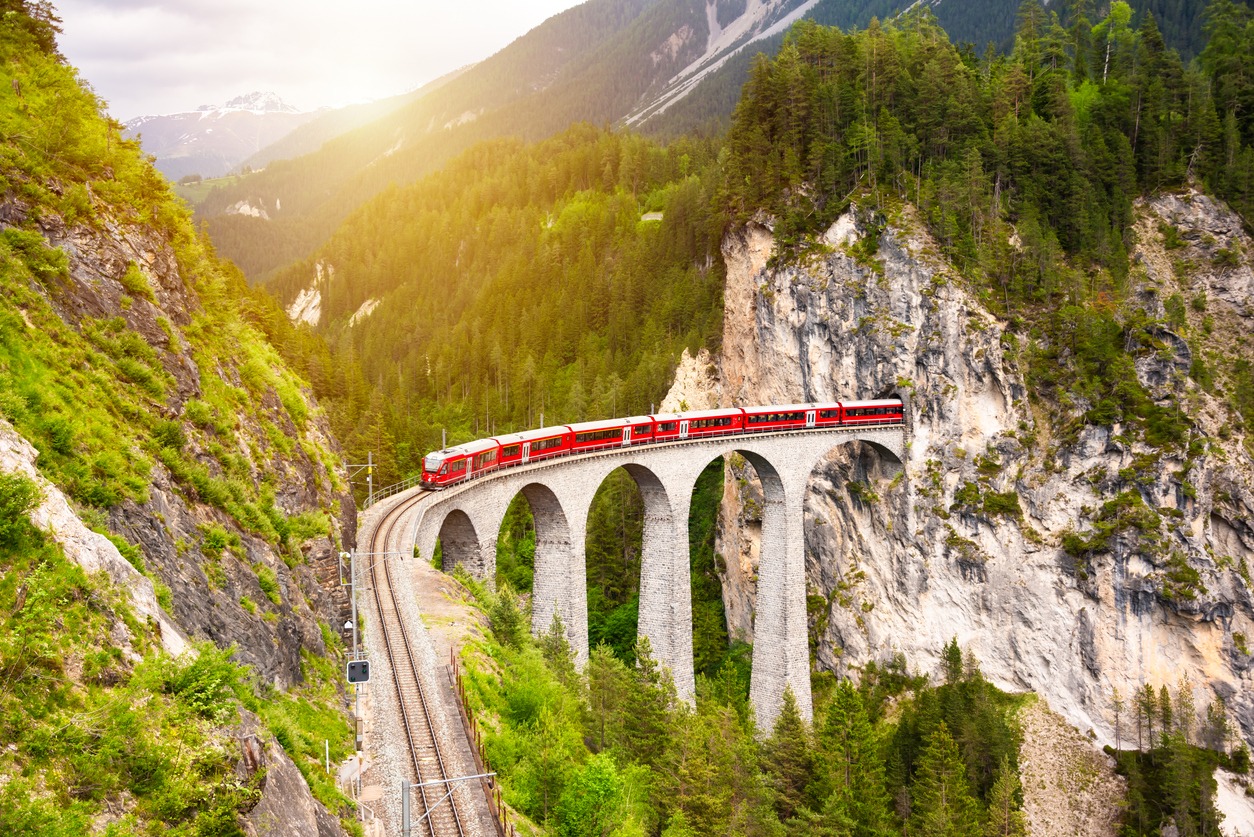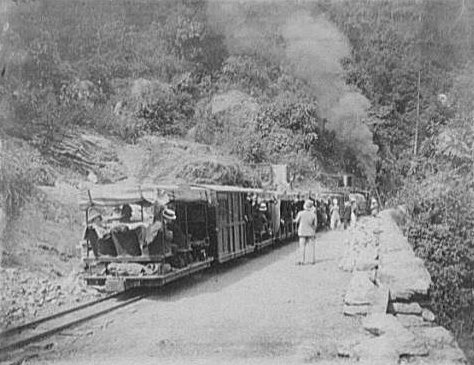The History of Trainspotting
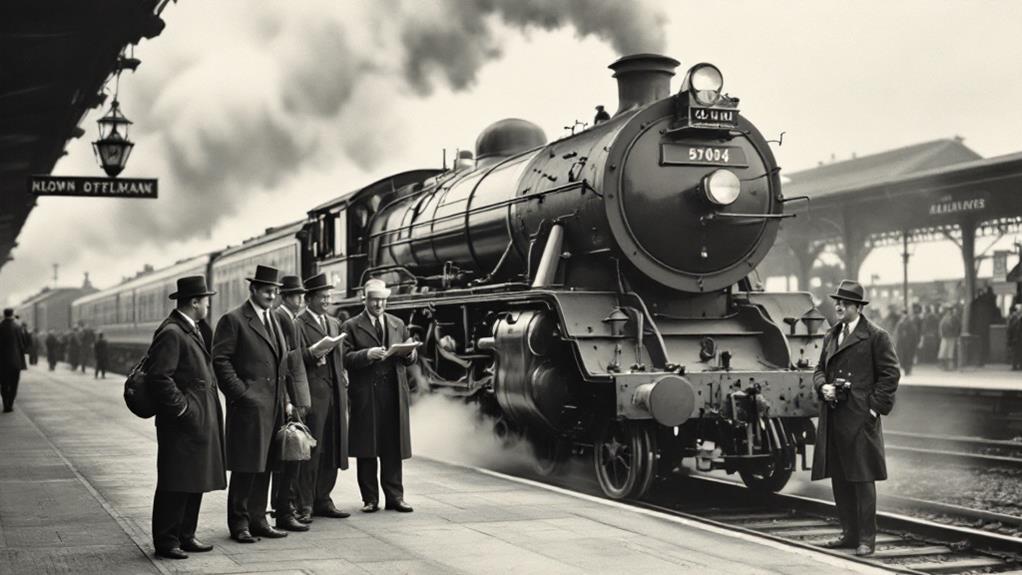
Trainspotting originated in the UK during the 1940s when a railway enthusiast proposed the hobby at Waterloo station. Initially rejected, the concept persevered and became a recognizable part of British culture. Over time, the practice evolved from simple locomotive spotting to a diverse community activity. Enthusiasts plunged into new technologies, from digital cameras to mobile apps, metamorphosing how they share information and coordinate sightings.
The hobby's cultural impact extended beyond railways, inspiring literature and film. Today, trainspotting continues to adapt, with enthusiasts balancing their passion against safety considerations and legal boundaries. There's much more to uncover about this unique pastime's expedition through time.
Origins in the 1940s
The origin of trainspotting as a hobby can be traced back to the United Kingdom in the 1940s. While many people might associate the term with the British film "Trainspotting" directed by Danny Boyle, the actual practice predates the movie by several decades.
You might be surprised to learn that this peculiar pastime was born from the innovative thinking of a young PR trainee at Waterloo station. This enterprising individual proposed the idea as a way to share locomotive specifications with enthusiasts for the first time. Although his bosses initially rejected the concept, the trainee persevered, creating a guide and establishing a loco-spotting club.
As the hobby gained traction, trainspotters frequently corresponded with rail companies, seeking information about various locomotives. This practice not only satisfied their curiosity but also served a practical purpose: teaching train safety awareness to enthusiasts.
The popularity of trainspotting grew steadily over the years, eventually becoming a recognizable part of British culture. It's fascinating to ponder how this hobby, which began as a simple idea, has left an enduring mark on both railway enthusiasm and popular culture.
Evolution of Spotting Styles
As trainspotting gained popularity, its styles and practices evolved substantially. You might be surprised to learn that the hobby has metamorphosed far beyond the stereotypical image of Ewan McGregor's character in Irvine Welsh's "Trainspotting." While the film portrays a different kind of Scottish subculture, real trainspotters have developed their own unique identities.
The evolution of spotting styles can be seen in three main areas:
- Terminology: The term "trainspotter" gave way to "bashers" and "photters," reflecting a shift in enthusiasts' approach.
- Social aspect: Trainspotting became a communal activity, with spotters sharing information about rare finds and prime locations.
- Expanded scope: Enthusiasts began exploring beyond major transport hubs, venturing to steam railways operating purely for pleasure.
You'll find that modern trainspotters are a far cry from the Sick Boy character played by Jonny Lee Miller. They're not all Scotsmen since Kenny Dalglish, either. Instead, they're a diverse group of enthusiasts who've adapted their hobby to changing times, embracing new technologies and social networks while maintaining their passion for trains.
Essential Equipment and Attire
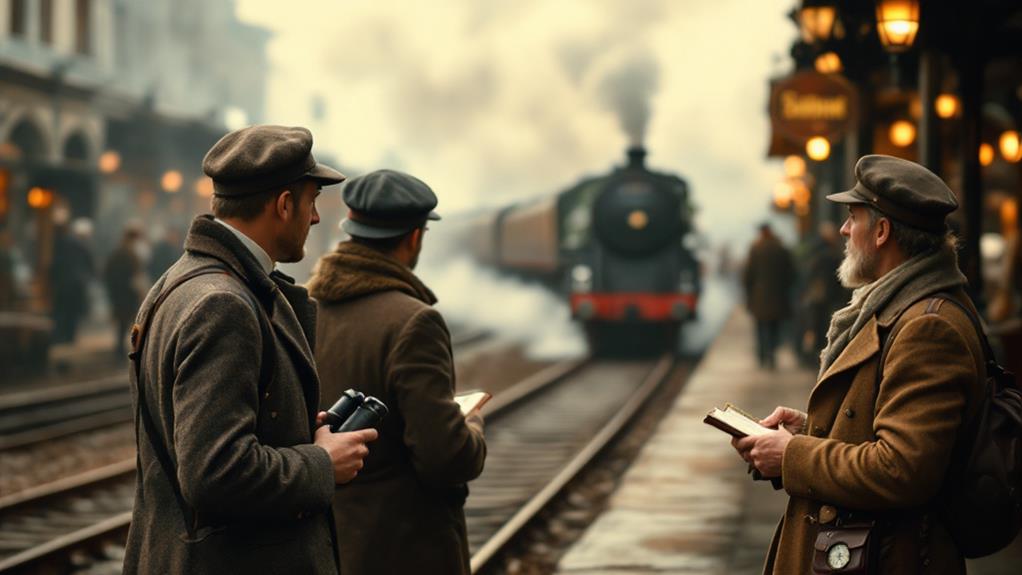
Gear-savvy trainspotters know that proper equipment and attire are essential for a successful outing. You'll want to start with a weather-appropriate jacket, as you'll often find yourself braving cold and wet conditions at popular spotting locations. Don't forget your woolly hat for extra warmth!
Your most pivotal tool is an up-to-date spotters guide, which you'll use to identify and verify locomotive specifications. Pair this with writing equipment like notebooks and pens to maintain detailed records of your observations. A phone or camera is indispensable for capturing visual evidence of your sightings, while a dictaphone or mobile phone allows you to record audio descriptions for later reference.
You'll need to be prepared for long hours at transport hubs and heritage railways, so comfort is key. The stereotypical anorak isn't just a fashion statement; it's practical protection against the elements. By equipping yourself with these essentials, you'll be ready to document your train encounters with precision and ease, ensuring that no detail goes unnoticed in your trainspotting expeditions.
Prime Spotting Locations
Now that you're properly equipped, it's time to investigate the best places to put your trainspotting skills to the test. While you might spend a lot of time imagining trainspotting adventures set in Edinburgh or other iconic locations, real life offers plenty of prime spotting opportunities.
Major transport hubs like Clapham Junction, York Central Station, and Birmingham New Street are teeming with activity, providing a constant stream of trains to observe.
If you're looking for a taste of social realism and a glimpse into railway history, unconnected steam railways operating for pleasure are excellent destinations. These spots offer a chance to see vintage locomotives in action, transporting you back in time.
To maximize your trainspotting experience, consider:
- Joining trainspotting communities to share information about rare sightings
- Exploring locations known for casual sightings of diverse trains
- Planning extended trips, perhaps even seven weeks, to visit multiple prime spots
Safety and Legal Considerations
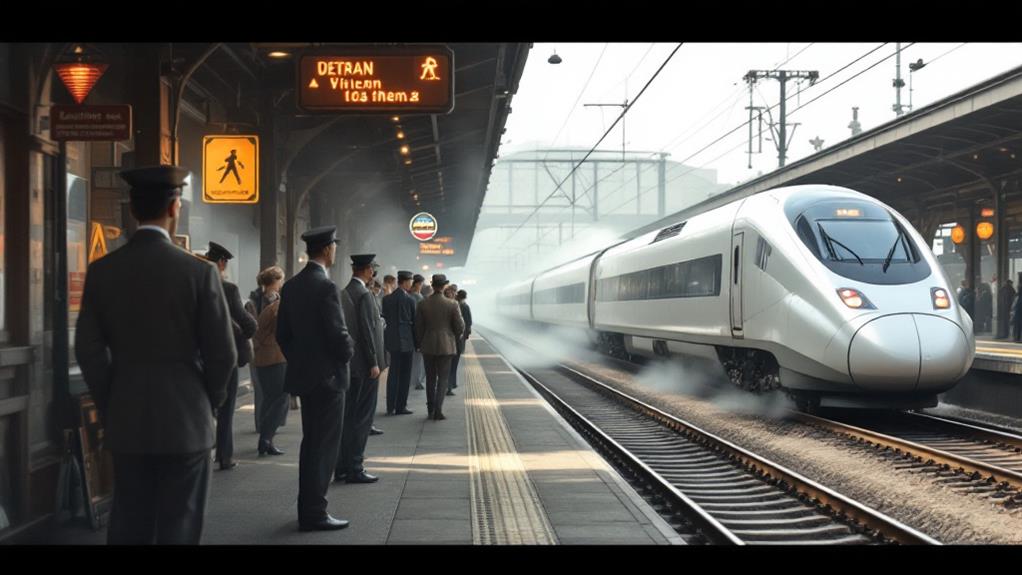
Ensuring safety and adhering to legal guidelines are essential aspects of responsible trainspotting. While there aren't official rules for the hobby, you must obey local laws and avoid trespassing on private property. Remember, safety concerns have been raised by train operators, and instances of injury or death have occurred due to enthusiasts accessing dangerous areas or standing too close to active tracks.
To practice responsible trainspotting, select safe, designated observation points and remain mindful of your surroundings. Avoid putting yourself or others at risk, as your actions could potentially disrupt operations and endanger passengers. For example, Andrew Macdonald, a company responsible for managing rail operations on Princes Street in Edinburgh, has expressed concerns about trainspotters interfering with train schedules.
Be aware that increased restrictions or crackdowns on trainspotting activities may occur if enthusiasts repeatedly violate rules. To prevent this, always prioritize safety and respect legal boundaries. By doing so, you'll contribute to the preservation of trainspotting as a hobby and help maintain positive relationships between enthusiasts and rail operators.
Cultural Impact and Representation
The cultural terrain of Britain was forever altered by the release of Irvine Welsh's novel "Trainspotting" and its subsequent film adaptation. You'll find that this seminal work captured the disillusionment of a generation in economically depressed 1980s Scotland, becoming a cornerstone of British popular culture.
Danny Boyle's film adaptation, with a screenplay by John Hodge, received critical acclaim for its:
- Gritty realism and dark humor
- Vibrant visual style
- Iconic soundtrack featuring Britpop and techno-dance tracks
The film's raw portrayal of urban blight and drug addiction sparked debate about its potential glorification of these themes. However, it's undeniable that "Trainspotting" left a lasting mark on British cinema, launching the careers of actors like Kelly Macdonald and Ewen Bremner.
With its energetic pace and cultural impact, the film drew comparisons to Quentin Tarantino's work. The soundtrack, featuring Lou Reed among others, contributed considerably to its enduring legacy. "Trainspotting" continues to influence popular culture, as evidenced by the successful release of "T2 Trainspotting" over two decades later, proving its status as a landmark in British filmmaking.
Technological Advancements in Trainspotting
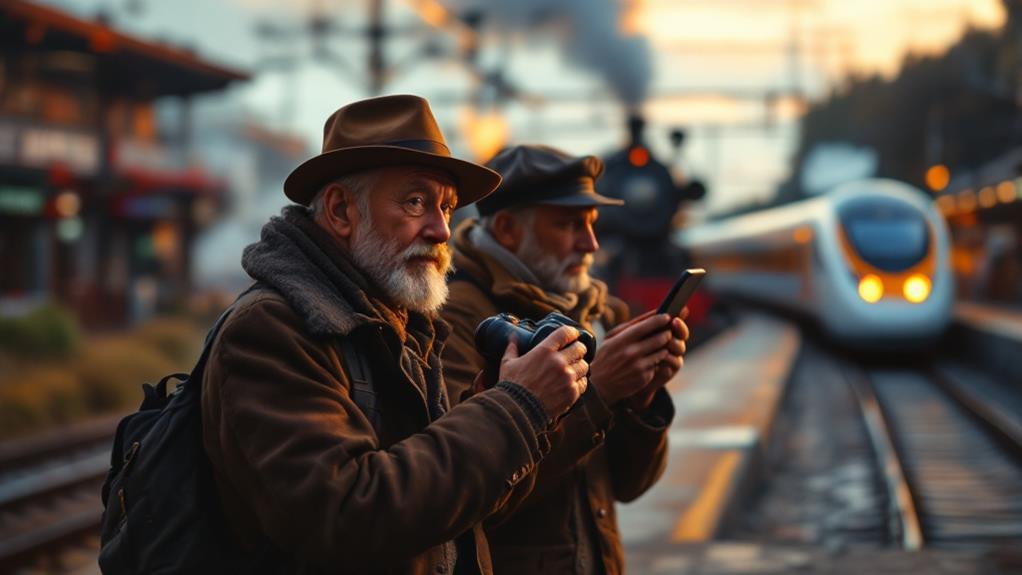
While "Trainspotting" left a lasting impression on popular culture, the actual practice of trainspotting has undergone its own change. The advent of affordable digital cameras in the 1990s revolutionized the hobby, allowing you to easily capture and share locomotive photographs. This technological shift paved the way for further advancements in the field.
The 2000s saw the rise of online forums and databases, connecting you with a global community of enthusiasts. You could now exchange information and sightings with fellow trainspotters worldwide. As technology progressed, smartphone apps with GPS functionality and real-time train tracking emerged, enabling you to locate and identify locomotives more efficiently than ever before.
High-resolution cameras and telephoto lenses have enhanced your ability to document trains from greater distances, improving the quality of your records. Additionally, video-sharing platforms have expanded the reach of trainspotting, allowing you to share evolving content of your experiences. These technological advancements have reshaped trainspotting, making it more accessible, interactive, and engaging for enthusiasts like you, while preserving the essence of the hobby.
Global Trainspotting Communities
Passionate trainspotters have formed lively communities across the globe, united by their shared enthusiasm for locomotives and rail operations. You'll find active groups in countries like the UK, USA, Japan, and Australia, where enthusiasts gather to share their love for trains. These global communities have flourished through:
- Trainspotting clubs and societies organizing trips and maintaining records
- Online forums and social media platforms enabling international connectivity
- Specialized publications catering to worldwide enthusiasts
The internet has revolutionized how you connect with fellow enthusiasts, allowing you to exchange information and coordinate meet-ups across borders. You'll find a wealth of resources at your fingertips, from enthusiast magazines to guidebooks detailing rare locomotive sightings.
International trainspotting events and conventions bring together passionate individuals from different countries, cultivating a sense of camaraderie and shared experiences. These gatherings provide unique opportunities to expand your knowledge, share your proficiency, and forge lasting friendships with like-minded enthusiasts from around the world. You're not just part of a hobby; you're a member of a thriving global community.

